When travelling, I love trying to get off the beaten path. So when the opportunity to travel to Wakkanai Hokkaido, the most northerly city in Japan, arose I was happy to yes to the adventure. While not visited by a lot of foreign tourists, Wakkanai is well-known for a quite a few reasons.
First of all, it’s home to Cape Soya, the most northerly point in all of Japan and just 40km from the Russian Island of Sakhalin. It also the also the first place in Japan to see sunrise on New Years Day, which means many people camp up here in the freezing cold New Years Eve.
The region is also home to stunning National Parks, Wetlands, Volcanic Islands and a regular ferry that connects Japan with Russia – perfect for overland travellers looking for an epic adventure.
While I only had 2 short days in Wakkanai, I made the most of my time and ticked off as many of the many Wakkanai tourist sites as possible. Here’s my pick of the top things to do in Wakkanai including outdoor adventures, chilling our in onsets and signing up for a unique Kimono Experience. Planning to visit the region with the little ones? This guide to Hokkaido with kids should help or you can read my list of the top places to visit in the Hokkaido region.
Table of Contents
ToggleVIDEO: Wakkanai, Hokkaido Travel Guide
<iframe width=”560″ height=”315″ src=”https://www.youtube.com/embed/Np92UNoJATk?si=zzhiwuwULG81lUkm” title=”YouTube video player” frameborder=”0″ allow=”accelerometer; autoplay; clipboard-write; encrypted-media; gyroscope; picture-in-picture; web-share” referrerpolicy=”strict-origin-when-cross-origin” allowfullscreen></iframe>
How To Get To Wakkanai
As mentioned, Wakkanai is the most northerly city in all of Japan. which makes it quite remote. Thanks to excellent public transport and cheap flights, it’s still easy enough to get to although it does take time. We flew to Sapporo then took a 6 hour train ride from Sapporo train station in Wakkanai – with one quick stop to change train in Asahidake. There’s also an airport in Asahidake that you could fly to, and then it’s only a 4 hour train ride.
There is a very small airport in Wakkanai, with 1 daily flight from Tokyo and two daily flights from Sapporo – but I think the train ride from Sapporo is very beautiful so wouldn’t recommend flying that route.
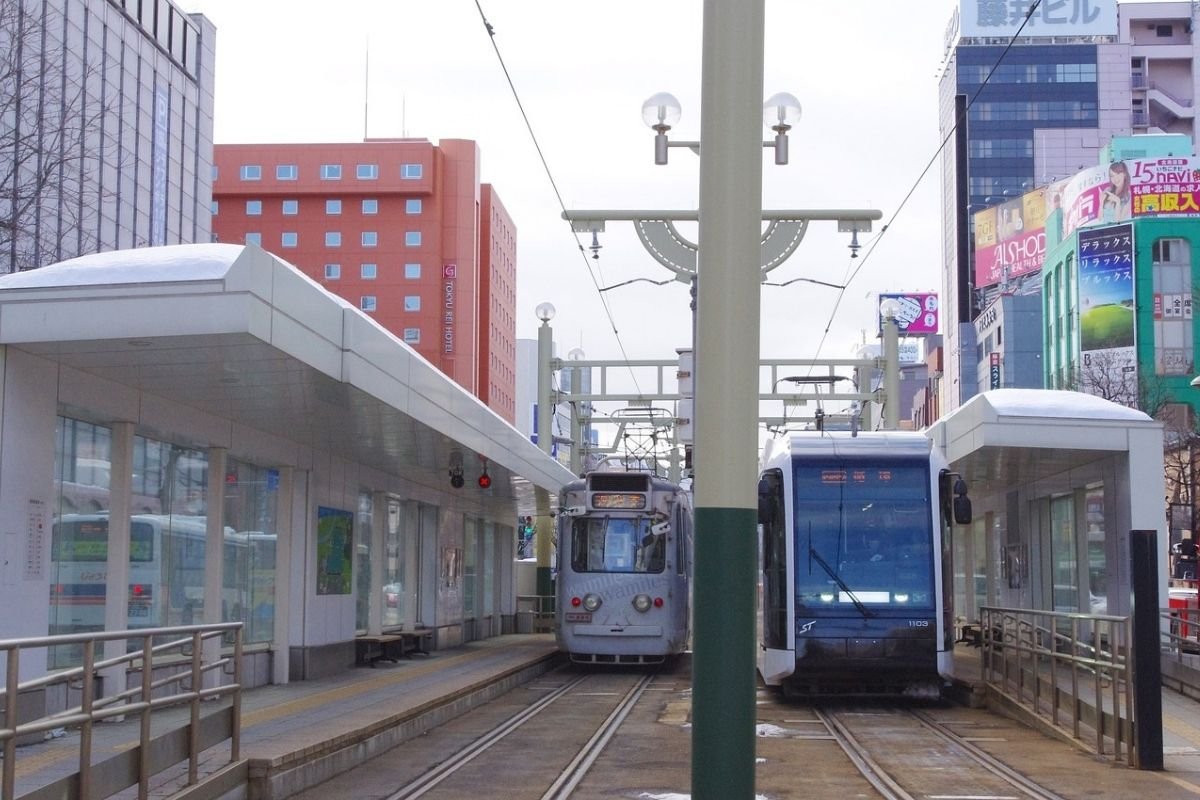
Getting Around
While there are public buses and trains that can take you to, or near, some of the main tourist sites, having your own transport will give you so much more freedom.
You can either rent a car for a day or two and explore by yourself, or the taxi association does tours of either 4 hours or 8 hours where you can rent the taxi (and driver) to take you to all the main sights for a hugely discounted price. This would be my first choice as the roads can be tricky to drive on when covered in snow and all the sign posts are written in Japanese!
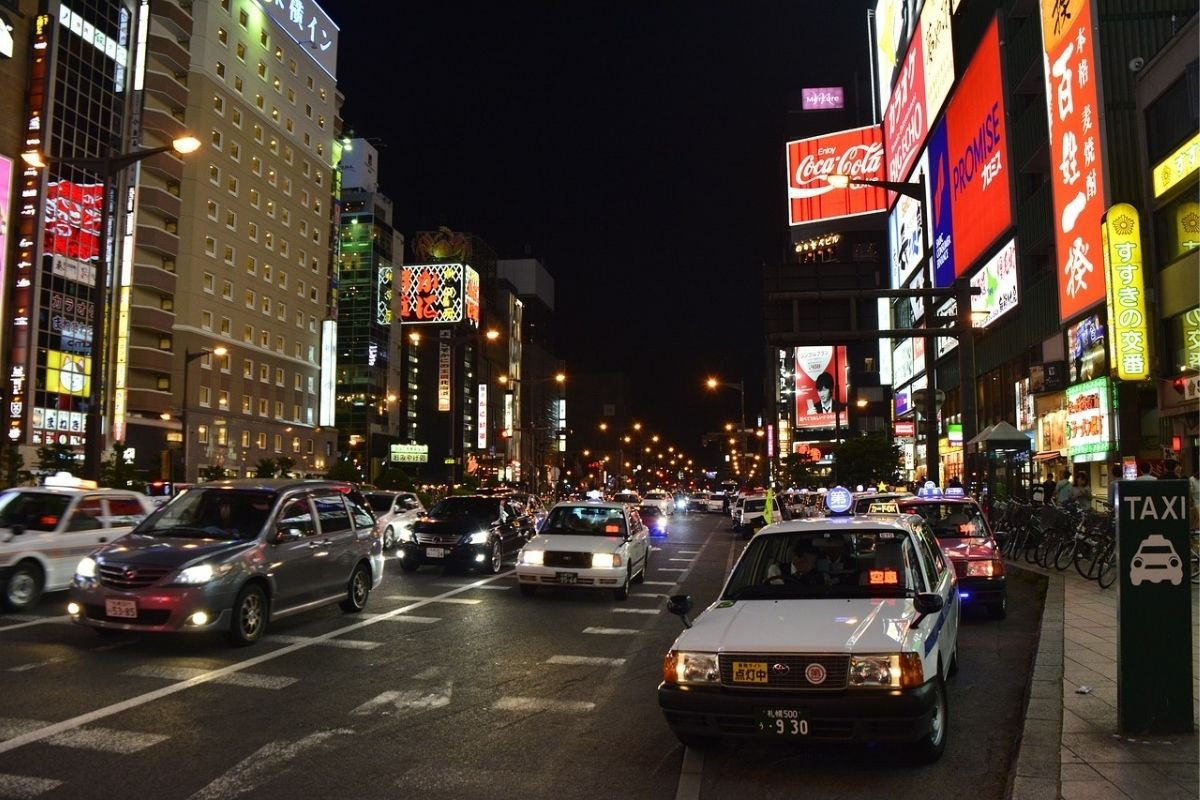
Top Places To Visit in Wakkanai
Rishiri-Rebun-Sarobetsu National Park
Driving along the coast south of Wakkanai city is mesmerising. You’ll pass the rugged Rishiri-Rebun-Sarobetsu National Park, a protected stretch of coastline from Wakkanai to Horonobe, which looks spectacular in winter when the entire coastline is covered with a perfect blanket of snow. In summer, you can visit some of Japan’s most beautiful beaches here and also visit the rest of the National Park which includes the volcanic mountain on Rishiri Island – which many says looks like an island floating in the sea and the nearby Rebun Island.
We kept wanting to stop the car to take photos, mesmerised by the dramatic coastline and beautiful snow-covered beaches. I would definitely love to return in summer to see the contrast.

Sarobetsu Wetlands
The wetlands are actually part of the National Park but are also, in a way, a separate and must visit attraction. Home to hundreds of birds and wildlife, including owls, foxes, white rabbits, lying squirrels and maybe even a rare crane. In winter, the visitor centre organzies snow shoe adventures across the wetlands – in search on animal footprints and learning about the fascinating formation of the Wetlands over thousands of years or looking out for an Eagle sighting.
In summer, the programme is similar, with long walks around the wetlands instead of snow shoeing and views of the spectacular fields full of wild flowers and long grasses.
We had so much on their snow shoe adventure – which included a fun stop in the middle o the snowy forest to have hot chocolate and of course Japan’s favourite snack – Kit Kats! The centre provides both the snow shoes and warm, ski clothing and boots so you don’t have to bring your own.
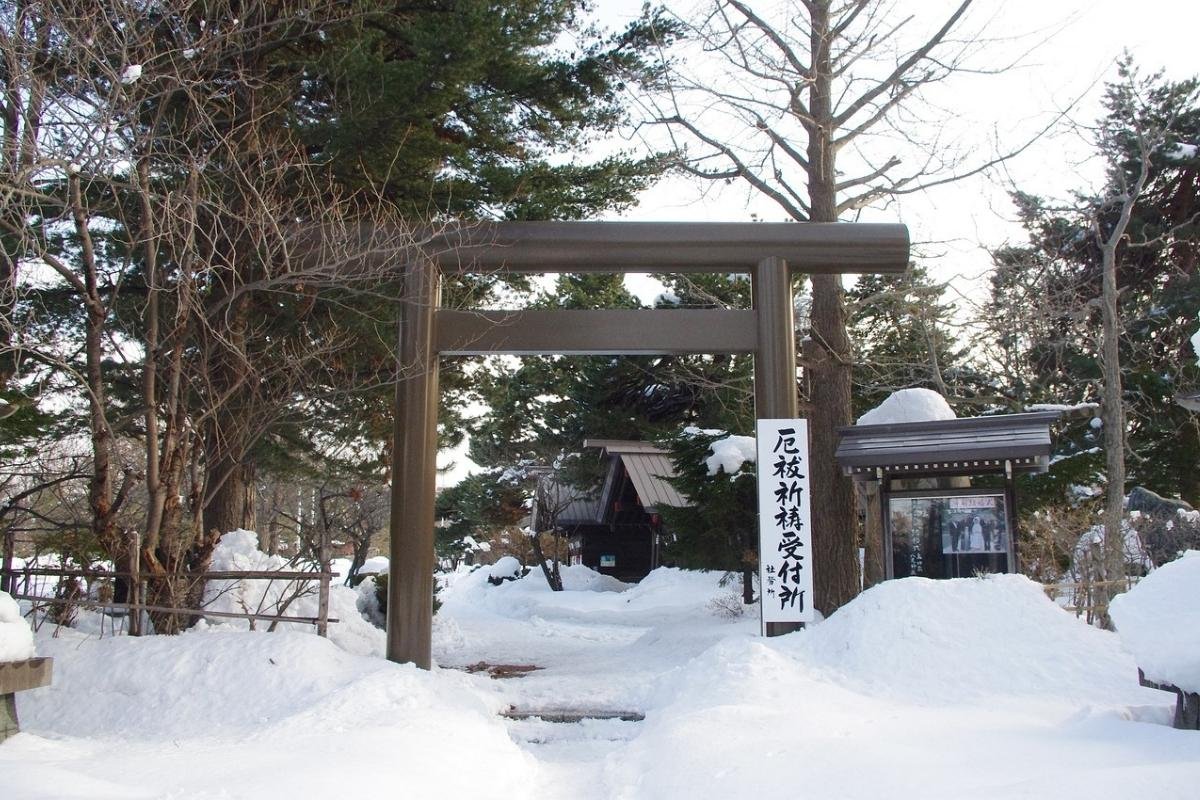
Toyotomi Onsen Village
Onsen villages are one of my favourite things in Japan! Toyotomi Onsen was actually founded by accident when miners were drilling for petroleum in the area and discovered the hot spring water. They also found petroleum, and the two mix together to make a therapeutic (especially for skin disorders) if not slightly headache-inducing spa – where the hot spring water smells like petrol but leaves you with silky smooth skin!
There two different bathing areas, and a small sauna inside the large onsen. The view out into the snow was beautiful with floor to ceiling windows giving a real calming effect. The onsen in the village also has a small little restaurant with a choice of noodle dishes, soups, friend pork cutlet and a dish unique to the area described below.
The town is also a ski resort, and while we didn’t go skiing while here, it would be a fun place to stay with a warm onsen guaranteed after a long day on the slopes! There are 7 onsets to choose from in the village – so you could even visit a different one each day!
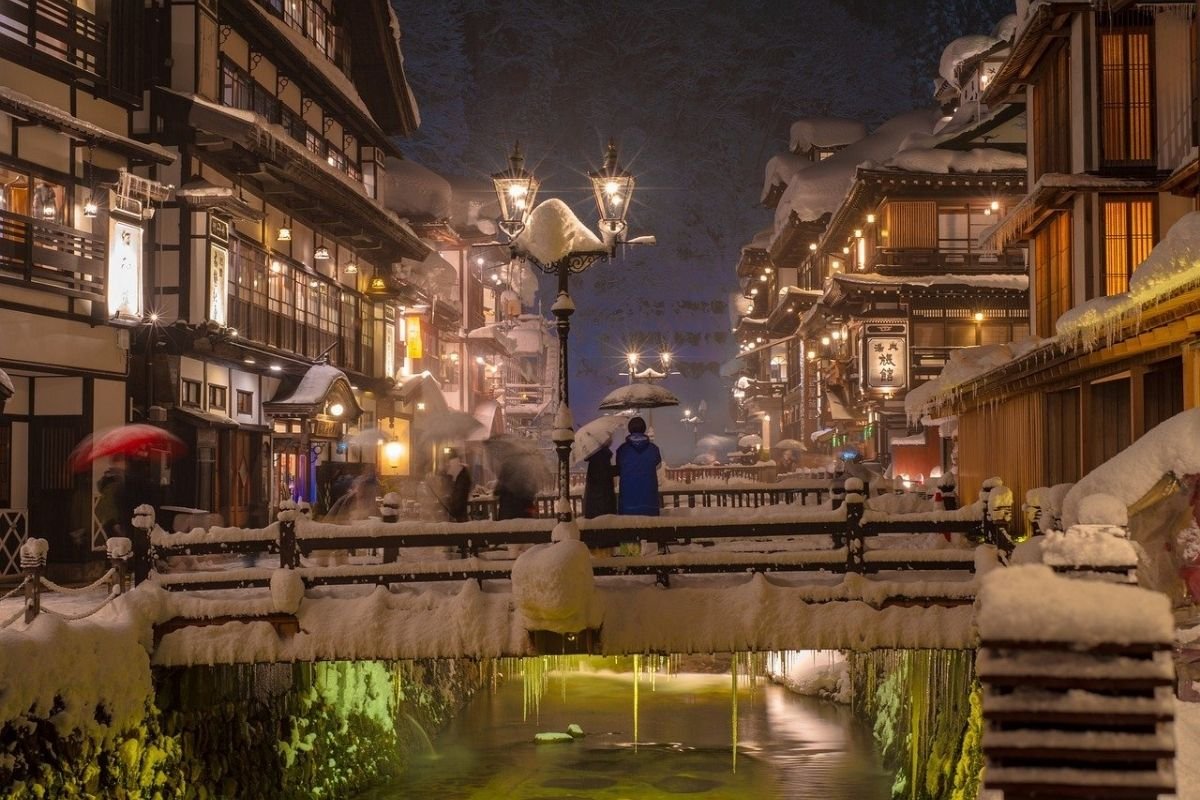
Drive to Cape Soya
While Cape Soya is probably the most famous landmark in Wakkanai, the drive there was actually a highlight for me. On a clear day the views are spectacular, looking across to small rocky islands covered in seals or out to Rishiri Island with its dramatic volcano floating in the ocean.
Once at Cape Soya, there’s a monument to take photos at, a small gift shop where you can buy souvenirs and a fun certificate to say you made it Japan’s most northerly point, an old lighthouse, a windmill up on the hill and what looks like an old military look out. This outing is best done on a clear day so if the weather looks anyway clear, jump in a car (or rent a taxi for the day) and make your way to Cape Soya.
Sunset at Cape Noshappu
Cape Noshappu, which is just a short drive from Wakkanai city, is the most popular sunset spot in the region. There’s this beautiful dolphin sculpture and the sunsets at an exact angle that the light shines through the dolphin sculpture. People love travelling in this region because you can see sunrise at Cape Soya then sunset at Cape Noshappu all in the same day.
Just a short walk from here is the stripey red and white Wakkanai Lighthouse – a fun place to stop off for a photo before heading back to the city or continuing your journey down the coast. It’s also the second highest lighthouse in all of Japan!
Wakkanai North Breakwater Dome
An architectural masterpiece, the North Breakwater Dome is by far one of the top places got visit in Wakkanai. Originally built as both a breakwater to protect the harbour during storms and as a passageway for people to walk under linking the train station with the ferry terminal. Years later the station was moved to a new location nearby and not as many people were travelling by ferry from here – so the connecting passageway is no longer used as much. It’s a beautiful building and a fun place to photograph.

Stay in a hotel with a view
I stayed in Hotel Surfeel Wakkanai and it came with this incredible view of the harbour out my bedroom window on the 8th floor. It’s walking distance from some great restaurants (listed below) and also less than 5 minutes walk from Wakkanai Train Station and the cool North Breakwater Dome. Oh, and their breakfast was one of the best I had in Japan!
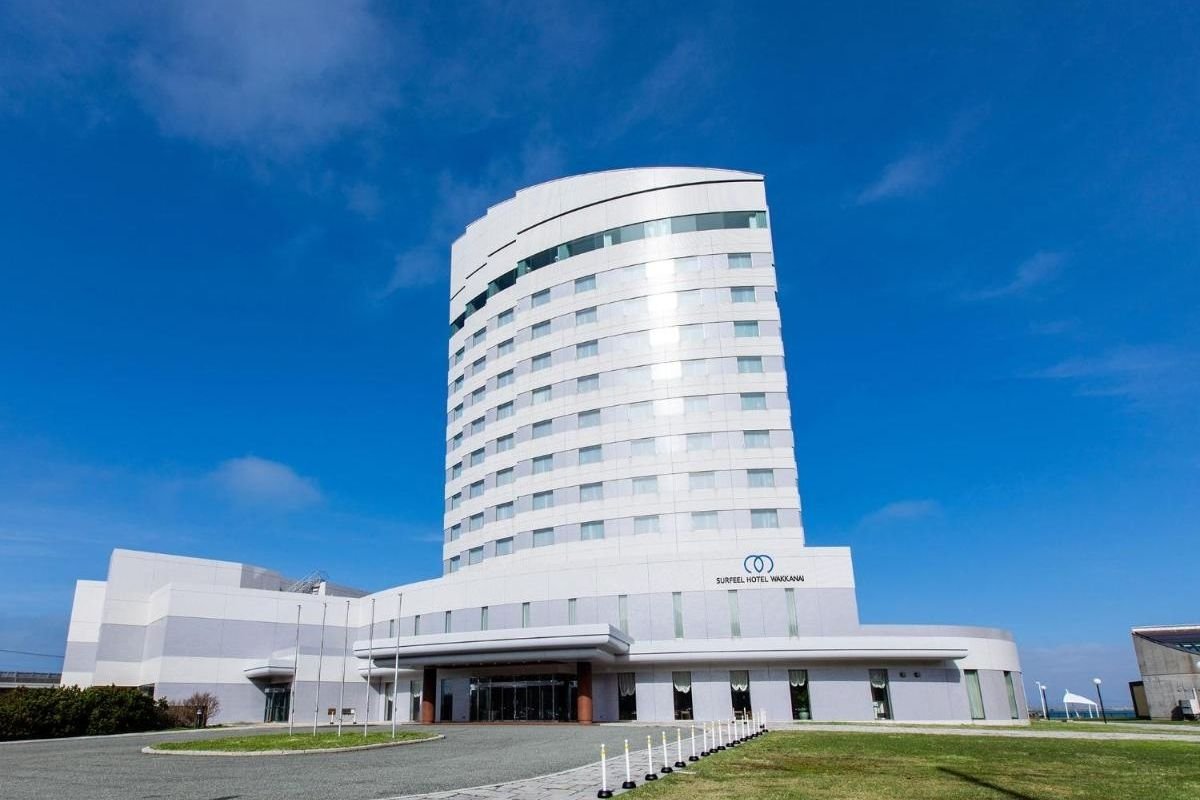
Fun Kimono Experience
Our hotel offered a very unique Kimono Experience where by you pick a traditional Japanese Kimono from a selection of colours, then the woman will come to your hotel room to help put it on you (which takes about 20 minutes) and then she takes you out to some cool places around town like the shrine below to take photos. It’s such a beautiful and iconic item of clothing and I felt so thankful to have the opportunity to wear it.
Highly recommend signing up to this if in Wakkanai – the photos against the backdrop of the snow were pretty special. The cost, per person, is $50 for the 2 hour experience.
Kimono photos thanks to Clara from Wild Road Travel Blog.
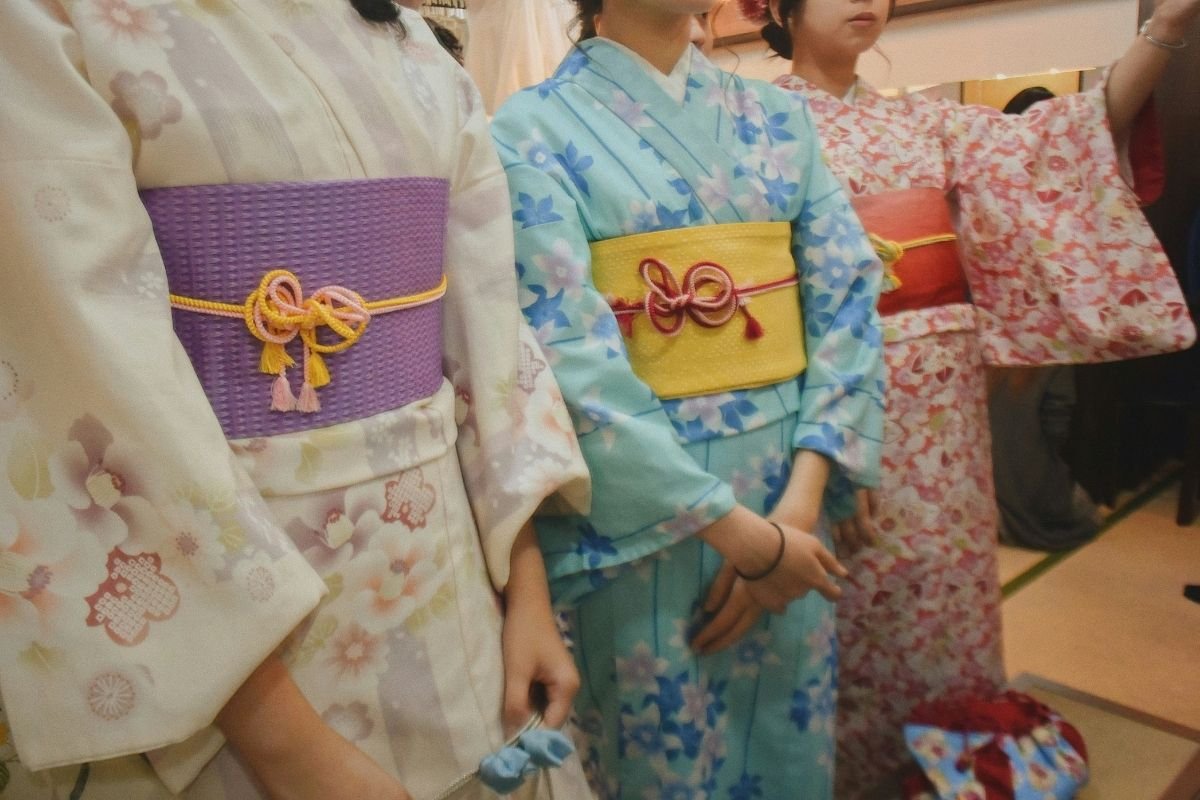
Kimono Experience Video
<iframe width=”560″ height=”315″ src=”https://www.youtube.com/embed/2g3miRq-I9c?si=TfPikG175LtfEr2G” title=”YouTube video player” frameborder=”0″ allow=”accelerometer; autoplay; clipboard-write; encrypted-media; gyroscope; picture-in-picture; web-share” referrerpolicy=”strict-origin-when-cross-origin” allowfullscreen></iframe>
Take part in a tea ceremony
While still dressed in our Kimonos, we took part in a traditional tea ceremony inside a mansion house turned museum. Mr Seto’s House, once owned by a rich fisherman in Wakkanai, is now a small museum that also offers a tea ceremony experience – where they teach you the traditional methods and etiquette. I did find it quite formal and struggled to sit on the floor in the right position – but it was a fascinating experience and one I’m thankful I got to do.
It’s also cool to wander around the house, to see what a traditional Japanese house looks like, especially one that is frozen in time.
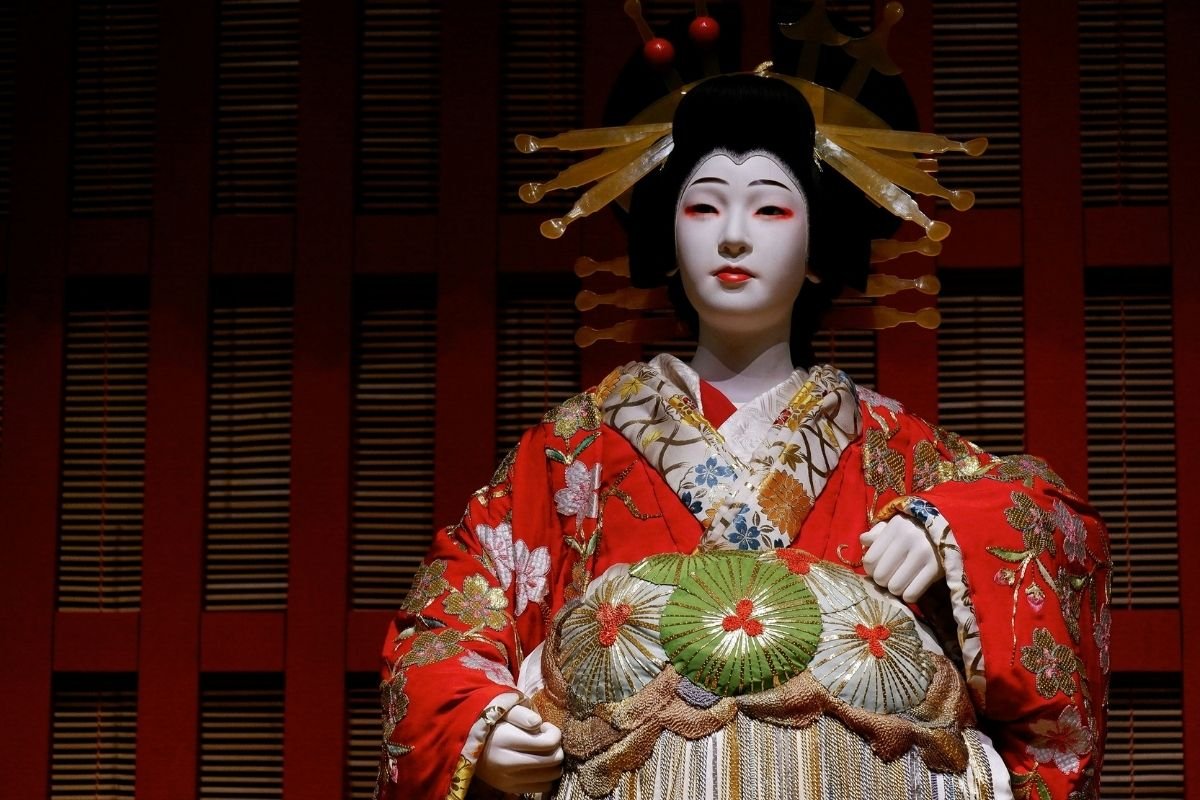
What To Eat in Wakkanai
Try Genghis Khan – A Hokkaido Speciality
One of the food specialities in Hokkaido is “Genghis Khan” – yes named after the man himself – and in some towns in Wakkani they use a very traditional dish for cooking the meal at your table. The vegetables are cooked in water in a “moat” surrounding the hot plate, and the steam from the veggies cooking is actually what cooks the meat on top. We tried deer and sheep meat and it was one of the tastiest dishes I ate in Japan.
This delicious grilled meat dish is also known as Jingisukan – so if you see signs for Jingisukan restaurants, be sure to head straight in! This is very unique to Hokkaido and a must-eat food in Wakkanai!
Octopus Shabu Shubu at Kurumaya Genji
On our first night we indulged a little too much, munching down this delicious fried beed and a huge plate of octopus shabby Shaun – a famous hotpot dish very popular in Japan. It was a welcome meal considering how cold it was outside that night!
Sushi stop
As with any big town or city in Japan, great sushi is always just a short walk away. We ate here on our last night in Wakkanai – and the restaurant also had a wide range of beer, sake and non-fish-based dishes including noodle salad and steak!
I hope you’ve enjoyed my Wakkanai Travel Guide! If you think I’ve forgotten anything, or have any questions, please leave a comment or feel free to get in touch. This trip was made possible thanks to the local tourism board in Wakkanai hosting me for 2 days.
